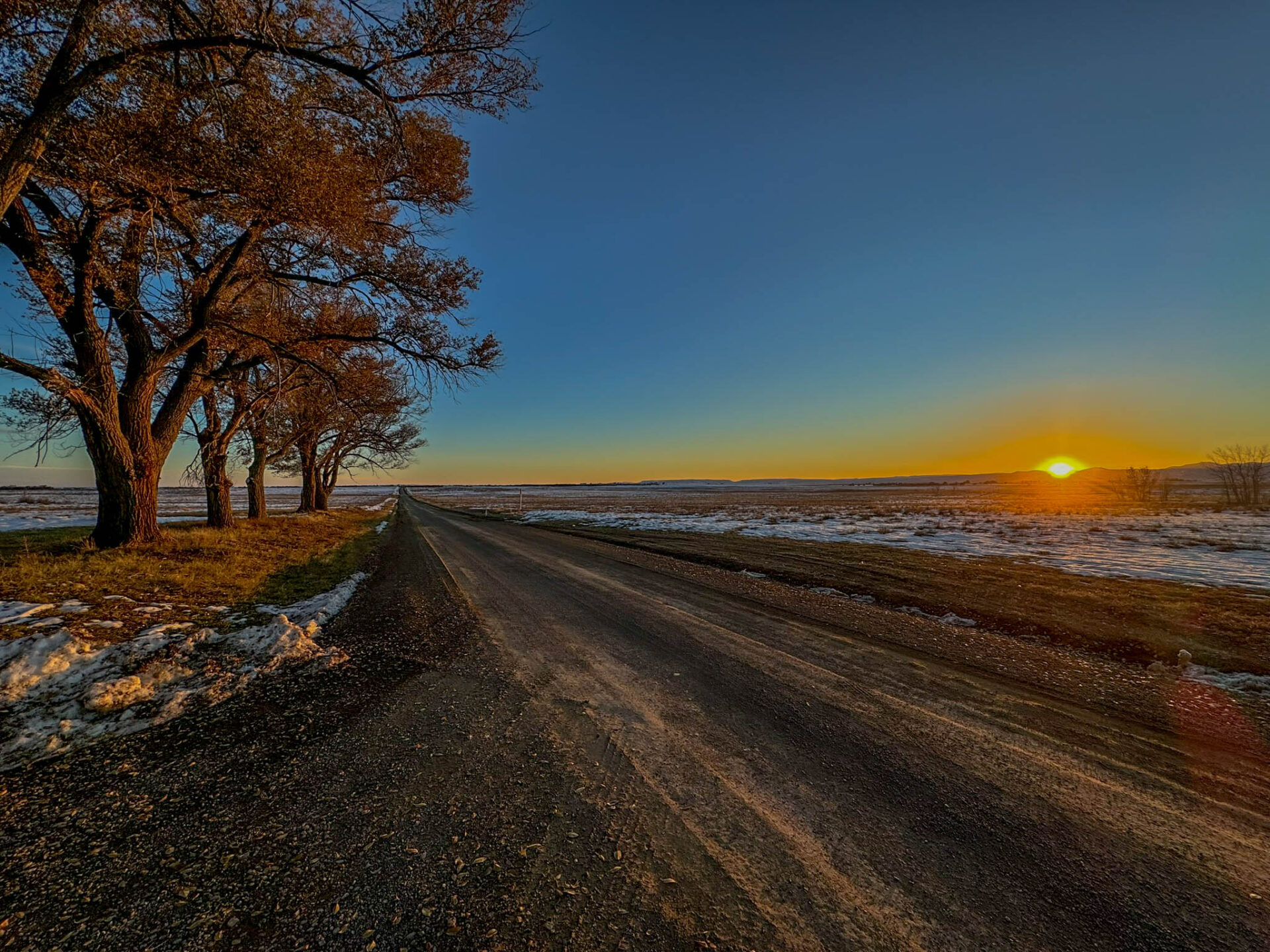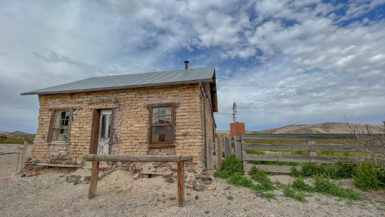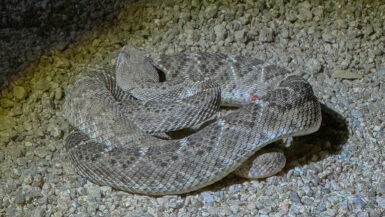A Tiny Town with Big Wildlife, Scenic Skies, and One Seriously Unexpected Animal Encounter
I recently found myself waking up on a Saturday morning at the ungodly hour of 4:30am to make a three hour drive northeast to the tiny town of Maxwell, New Mexico. If you’ve been on I-25 between Raton and Las Vegas (NM), then you probably whizzed by Maxwell without noticing. Unless you’re a birder or hunter. I fall in the first category, though not of the fanatical variety. The town of Maxwell is home to the Maxwell National Wildlife Refuge, which happens to be on the top 10 list of birding hotspots in New Mexico. Here’s what I learned about the town of Maxwell and its National Wildlife Refuge.


Table of Contents
A Brief History of Maxwell, New Mexico
From Native American roots to a stop along the Santa Fe Trail
The plains surrounding the Maxwell National Wildlife Refuge have been a source of food and trade for thousands of years. The Apache, Kiowa, Ute, and Comanche Native American tribes utilized this area before settlers started to arrive via the Santa Fe Trail. You’ve probably heard of the Santa Fe Trail but, like me, can’t provide any details off the top of your head. Here’s the cliff notes version.
The Santa Fe Trail was established in 1822 and served as an important commercial highway until the railroad arrived in the 1880s. The Santa Fe Trail is 900 – 1,200 miles long (depending on the time in history), extending from Santa Fe, New Mexico to Franklin, Missouri. The original goal of the Santa Fe Trail was to support trade between the U.S. and Mexico. That may sound a bit confusing since today, Santa Fe is about 300 miles north of the border. But from 1821 to 1848, Santa Fe was part of Mexico’s northern territory of Nuevo México.
As you can imagine, there’s a whole lot of history to share on the topic of the Santa Fe trail. But today, I’m focusing on Maxwell. I’ll just say that Maxwell is located within a few miles of the historic Santa Fe Trail, and we’ll leave it at that.
The Birth of Maxwell: The Legacy of Lucien Bonaparte Maxwell
Maxwell owes its name and origin to Lucien Bonaparte Maxwell (1818 – 1875), a prominent figure in 19th-century New Mexico. Lucien was a fur trapper, trader, and rancher who became one of the largest landowners in U.S. history, overseeing the massive Maxwell Land Grant. This grant spanned over 1.7 million acres, covering much of northeastern New Mexico and southern Colorado.
Lucien was born in a small town called Kaskaskia in Illinois territory, a few months before Illinois became a state. His father, Hugh Maxwell, was an Irish immigrant, and his mother, Odile Menard, was the daughter of a famous French Canadian fur trader named Pierre Menard. Pierre taught his grandson Lucien how to hunt and trap. Lucien learned the ropes early and he left home at the age of 15 to study for two years in Missouri before moving west with the American Fur Company. While working at the American Fur Company, Lucien met another soon-to-be famous fur trapper and trader named Kit Carson. Lucien and Kit became lifelong friends.
In his early years with the American Fur Company, Lucien attended fur trade fairs, including one large fair that took place in Taos, New Mexico. In Taos, Lucien met a fur trader named Charles Beaubien and Lucien worked in Charles’s shop from time to time. This was fortuitous for Lucien in two ways. For starters, that’s where Lucien met his wife, Luz Beaubien, one of Charles’s six daughters. Lucien was 23 years old at the time, and his wife was 10 years younger than him. In other words, Luz was only 13 years old when she was married to Lucien. As an interesting side note, Lucien and Luz were married at the same time (a double wedding) as Kit Carson and Josefa Jaramillo.

In the years that followed, Charles Beaubien came to own large amounts of land in New Mexico and Colorado. This chunk of land eventually became known as the Maxwell Land Grant. Why wasn’t it called the Beaubien Land Grant? Well, when Charles died in 1864, he left his share of the land grant to his six children. Lucien and his wife Luz bought out the other five heirs. In the end, Lucien and Luz paid about $35,000 for over 1.7 million acres, making them the largest landowners in the world at the time. Not a bad deal. They renamed the property the Maxwell Land Grant, and set up their headquarters in Cimarron, New Mexico.
When gold was discovered on his property, Lucien leased some of the land to miners and sold them supplies. Then, in 1870, Lucien decided to sell most of his land to an entity that became known as the Maxwell Land Grant and Railroad Company. Lucien used the money to purchase Fort Sumner from the U.S. Army for $5000. Fort Sumner had been abandoned in 1869. Lucien converted Fort Sumner into a twenty room mansion.

On July 25, 1875, Lucien died at Fort Sumner at the age of 56. The cause of death is still up for debate. Some say stroke, some say cardiac issues, and others think poisoning or other nefarious causes were at play. That secret is buried with him. You can find his tombstone at the Fort Sumner Cemetery. Lucien’s only son, Peter Maxwell (1848 – 1898) continued to live at the Fort Sumner home after his father’s death.
A few years later, in 1879, Maxwell, New Mexico was established as a town in honor of Lucien’s prominent role in the region’s history and his ownership of the Maxwell Land Grant, which encompassed much of the surrounding area.
Railroads and Ranching: The Backbone of Maxwell
Maxwell was initially developed as a small railroad and agricultural community, benefiting from the railway expansion. Maxwell’s location near the railroad made it a strategic point for settlers and commerce in the late 19th century.
The railroad brought both opportunity and growth to Maxwell. By connecting the region to larger markets, it allowed local farmers and ranchers to thrive. Agriculture, particularly the cultivation of alfalfa, grains, and livestock, became the lifeblood of the community. Ranching has deep roots in Maxwell, with families passing down the trade for generations.
As the village grew, it developed a strong sense of community, with residents building schools, churches, and businesses to support the local population.
Maxwell Today: A Quiet Echo of the Past
Today, Maxwell remains a small village in Colfax County with a population somewhere between 200 – 450 people, depending on what source you look at. Its historical roots are still evident in the landscape, from the old railroad tracks to the surrounding ranchlands.









The Maxwell National Wildlife Refuge
In 1965, Maxwell added another chapter to its history with the establishment of the Maxwell National Wildlife Refuge. It was formed through the purchase of private land to minimize crop depredation on neighboring farms by migratory birds. The refuge served as a sanctuary for migratory birds and wildlife.

Located at an elevation of 6,050 feet, the refuge covers over 3,700 acres of lakes, grasslands, and wetlands, providing a unique opportunity to view wildlife in a variety of habitats, including short grass prairie, playa lakes, wetlands, woodlots, and agricultural lands. It’s surrounded by high mesas and extinct volcanos to the east and northeast, and by the Sangre de Cristo Mountains to the west.
Visiting Maxwell National Wildlife Refuge
The biggest draw in Maxwell for tourists is the Maxwell National Wildlife Refuge. The Maxwell National Wildlife Refuge is located along the Central Flyway, a north-south bird migration route that extends from breeding grounds in Canada to wintering grounds in the U.S., Mexico, Central America, and South America, depending on the species. Birds may pass through Montana, Wyoming, South Dakota, Nebraska, Kansas, Oklahoma, Texas, and New Mexico, depending on the route they take.


Maxwell National Wildlife Refuge provides feeding and resting areas for wintering waterfowl and migrating birds that depend on shortgrass prairie habitats. As a result, it’s now a popular destination for birdwatchers, photographers, and outdoor enthusiasts. Visitors can explore the refuge’s hiking trails through grassland and marshy areas, enjoy picnicking in designated areas, go fishing at the refuge’s stocked lakes, or camp overnight in the National Wildlife Refuge campground.

Birding at Maxwell National Wildlife Refuge
For birdwatchers, Maxwell National Wildlife Refuge is a great place to visit. Maxwell National Wildlife Refuge typically makes eBird’s top 10 list of birding hotspots in New Mexico each year, with 290 species of birds documented there in 2024. Some of the birds like to hang out far from where you’ll be standing, so you’ll want to bring binoculars and a spotting scope, if you have one.







Wildlife Beyond Birds
While the refuge is famous for its avian residents, it’s also home to a variety of other wildlife. Mule deer, coyotes, pronghorn antelope, and jackrabbits roam the grasslands, while amphibians and reptiles find sanctuary in the wetlands. We also spotted a herd of elk during our trip. They were hard to miss.

More surprising, and even harder to miss, were some Bactrian camels on private land. I did a double-take when I first saw them. It’s not something you see every day in New Mexico. Bactrian camels (the camels with two humps) are from the steppes of Central Asia, in places like Mongolia. These camels in Maxwell are raised and sold by the Whiteley Stage Ranch. They also raise and sell Highland Cattle, although I didn’t spot them during my visit. I was probably too distracted by the Bactrian camels.


Best Times to Visit Maxwell Wildlife Refuge
Maxwell National Wildlife Refuge is a year-round destination, but the best times to visit are during the spring and fall migrations when bird activity is at its peak. Early mornings and late afternoons provide the best light for photography and the highest likelihood of wildlife sightings.
Winter is also a good time to look for bald eagles and other winter residents, although we didn’t have any luck with bald eagles during our visit.
Here’s a list of the 47 species we saw during our visit to Maxwell National Wildlife Refuge on a cold day in November 2024. This included visits to Refuge Lake 13, Lake 14, agricultural land surrounding Maxwell National Wildlife Refuge (Laguna Madre Road), and Stubblefield Lake.
- American Coot
- American Goldfinch
- American Kestrel
- American Wigeon
- Brewer’s Blackbird
- Bufflehead
- Cackling Goose
- Canada Goose
- Canvasback
- Chestnut-collared Longspur
- Common Raven
- Dark-eyed Junco
- Eared Grebe
- Eurasian Collared-Dove
- European Starling
- Ferruginous Hawk
- Gadwall
- Great Blue Heron
- Green-winged Teal
- Hairy Woodpecker
- Hooded Merganser
- Horned Lark
- Lesser Scaup
- Long-billed Dowitcher
- Mallard
- Merlin
- Northern Flicker
- Northern Harrier
- Northern Pintail
- Northern Shoveler
- Pine Siskin
- Prairie Falcon
- Redhead
- Red-tailed Hawk
- Red-winged Blackbird
- Ring-billed Gull
- Ring-necked Duck
- Rock Pigeon
- Ruddy Duck
- Sandhill Crane
- Savannah Sparrow
- Song Sparrow
- Spotted Towhee
- Western Grebe
- Western Meadowlark
- White-crowned Sparrow
- Wild Turkey
Cost of Entry to Maxwell National Wildlife Refuge
What’s the cost of admission to Maxwell National Wildlife Refuge? Zero! Entry to the refuge is free, and it’s open from sunrise to sunset year-round.
Camping at the Maxwell National Wildlife Refuge
The refuge offers primitive camping options for those who like to keep things simple and get back to the basics. You’ll find picnic tables and fire rings, but fires may or may not be permitted, depending on the conditions. There are no electric, water, or sewer hookups, so campers should prepare accordingly. All the campsites are easily accessible by car. Given its remote location with minimal light pollution, the night sky can be a spectacular backdrop for your camping experience.



Colfax Tavern & Diner at Cold Beer NM
I like visiting remote places, particularly places that have some character. So, I couldn’t pass up the opportunity to visit the “Colfax Tavern & Diner at Cold Beer NM“. I put that in quotes, as that’s how it’s listed on the tavern’s website. Colfax Tavern & Diner at Cold Beer NM has been serving food and drinks for locals and visitors since 1929. As the tavern’s slogan puts it, it’s a place “Where not much happens, but you better be here when it does!”.
Despite the name of the place, Colfax Tavern & Diner at Cold Beer NM is located in Maxwell, which happens to be in Colfax County. Hence the first part of the name. The Cold Beer part is just smart marketing. The tavern is in the boonies, about a 15-20 minute drive west of the Maxwell National Wildlife Refuge visitor center. Here’s a photo to give you a sense of what I mean by the boonies:

The Colfax Tavern & Diner at Cold Beer NM serves, green chile cheeseburgers, pizza, and, of course, cold beer. All of those items, beer included, are available to-go.

At the time of this writing, here are the hours they are open. Like most places in small towns, you’ll probably want to call in advance to make sure they’re open.
- Monday: Closed
- Tuesday: Closed
- Wednesday: Closed
- Thursday: 5pm – 9pm, and the kitchen closes at 8pm
- Friday: 5pm – 9pm, and the kitchen closes at 8pm
- Saturday: 5pm – 9pm, and the kitchen closes at 8pm
- Sunday: 12pm – 8pm, and the kitchen closes at 7pm




Conclusion
The next time you’re driving on I-25 between Raton and Las Vegas, New Mexico, exit the highway at Maxwell for a taste of life in the slow lane. You’ll be glad you did.

Thought for the Week
For this week’s thought for the week, I wanted to stick to a ranching theme in honor of the residents of Maxwell, New Mexico. In my research, I was surprised to come across a ranching quote from Sandra Day O’Connor, the first woman to serve as a U.S. Supreme Court justice. The fact that I was initially surprised served as a good reminder to “never assume”. As Albert Einstein put it, “Assumptions are made and most assumptions are wrong”. Our preconceived notions or beliefs about a person or situation are often incorrect, since they’re based on limited information.
I learned that Sandra Day O’Connor grew up on a 200,000 acre cattle ranch in southeast Arizona, near the New Mexico border, and she knew more about ranching than I ever will. So, this week’s quote of the week is from Sandra Day O’Connor. Not because it’s a profound quote, but because it serves as a helpful reminder to never assume.
“Well, it’s a little odd, the path I took, because when I was young, I wanted to be a cattle rancher. That was what I knew and that was what I liked.”
― Sandra Day O’Connor
Thanks for reading, and happy travels!
Mark (New Mexico Travel Guy)

Mark Aspelin, The New Mexico Travel Guy (www.newmexicotravelguy.com), is a travel writer, conservation biologist, project manager, and author of two books. He’s visited over 100 countries and all 50 U.S. states—just enough to land in the Travelers’ Century Club and make choosing a favorite place nearly impossible. He’s currently on a questionable mission to visit every town in New Mexico (there are over 500) and write a story about each one, with plans to wrap it up sometime before his early to mid 100s. Mark balances his writing with conservation and project work from his home base in the East Mountains near Albuquerque, New Mexico.




